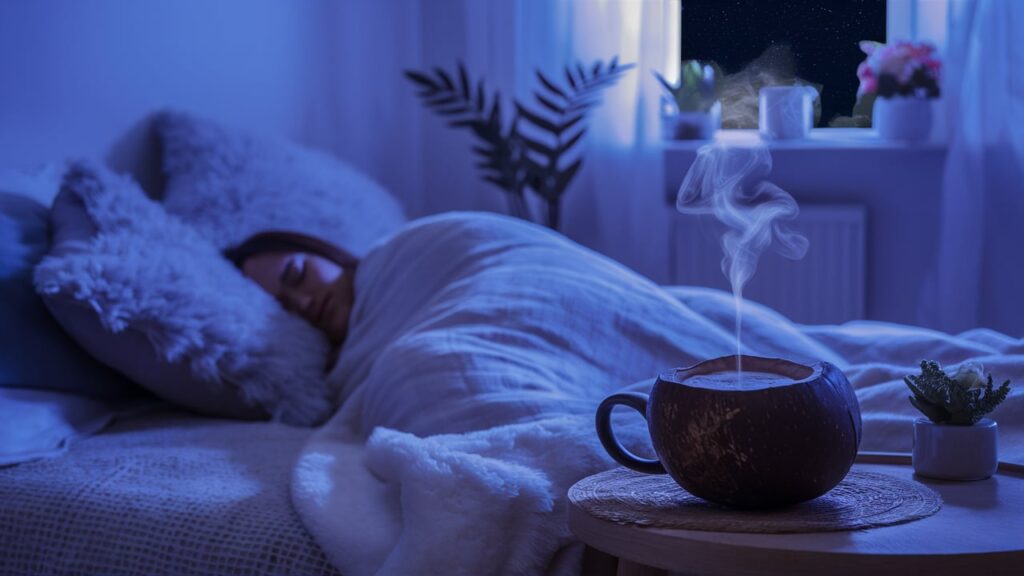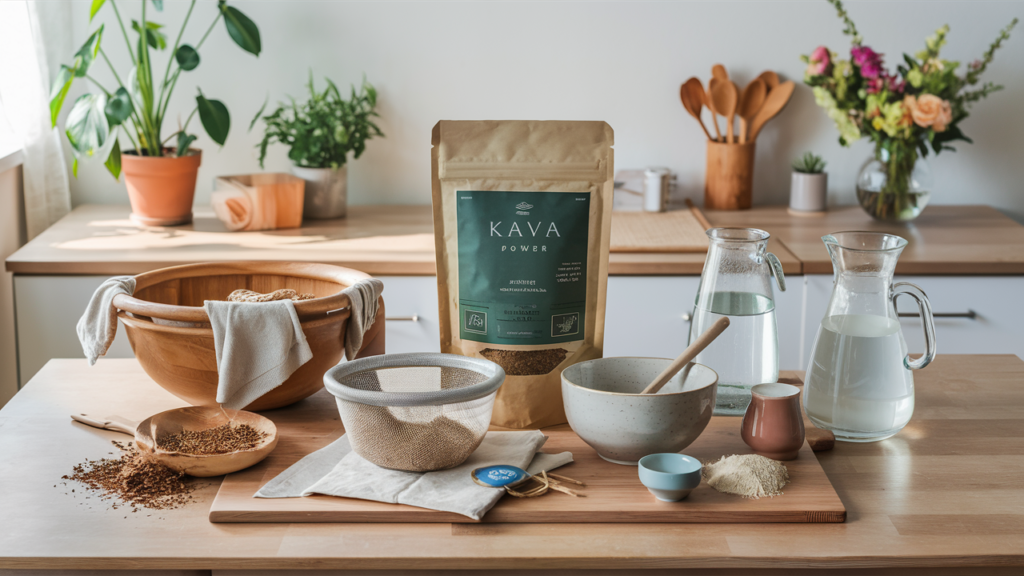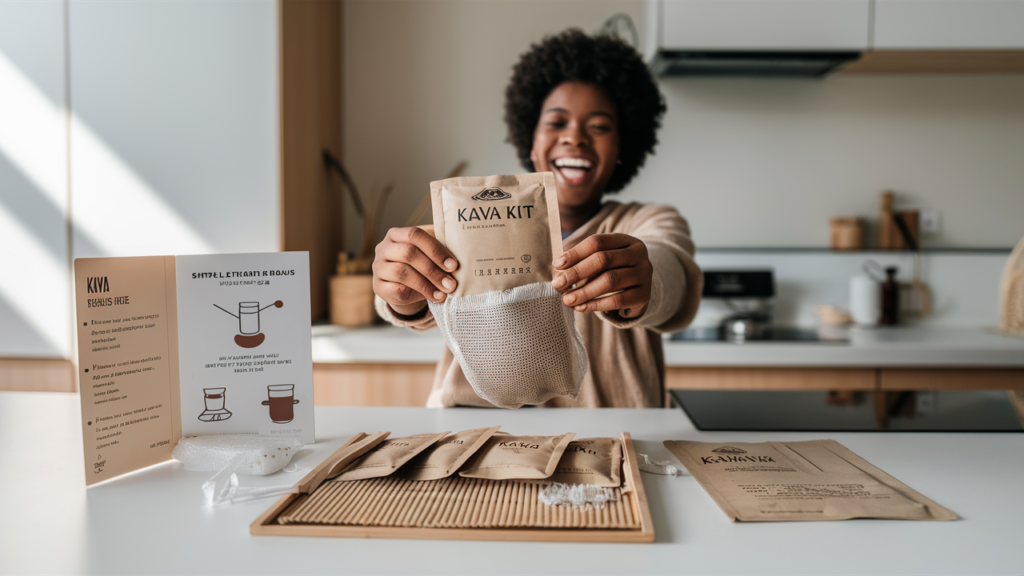Introduction
What is Kava?
Native to the South Pacific, kava (Piper methysticum) is a plant. This plant’s roots are utilized to make a sedative, anesthetic, and euphoric beverage. Because of its calming properties, it is often consumed on the Pacific islands.
Brief History of Kava
Kava has been used for thousands of years in the Pacific Islands for its medicinal, religious, political, cultural, and social purposes. Traditionally, it was prepared by chewing, grinding, or pounding the roots and mixing them with water.
Why People Drink Kava
People drink kava for various reasons, including its calming effects, its ability to relieve anxiety and stress, and its social and cultural significance. It’s also used as a natural sleep aid and for its potential to enhance mental clarity and focus.
Health Benefits of Kava
Relaxation and Stress Relief
Kava is well-known for its ability to promote relaxation without impairing cognitive function. It’s often used to reduce anxiety and stress, making it a popular choice for those seeking a natural way to unwind.
Sleep Aid
Many people use kava as a natural sleep aid. Its calming effects can help ease the mind and body, making it easier to fall asleep and stay asleep through the night.

Social and Cultural Benefits
In many Pacific Island cultures, drinking kava is a social activity. It’s often consumed in groups, promoting a sense of community and bonding among participants. Traditional kava ceremonies are an important cultural practice in these regions.
Understanding Kava Varieties
Noble vs. Tudei Kava
The two main types of kava are: Noble and Tudei. Noble kava is preferred for its balanced effects and lower risk of side effects. Tudei kava, on the other hand, is more potent and can cause undesirable effects like nausea and prolonged drowsiness.
Buy Noble kava
Popular Kava Strains
Some popular kava strains include Borogu, Melo Melo, and Mahakea. Each strain has its own unique effects, ranging from deeply relaxing to mildly uplifting.
Choosing the Right Kava
When selecting kava, consider what you want to achieve. For relaxation and stress relief, Noble kava strains are usually the best choice. For stronger effects, you might explore other varieties, but be cautious with their use.
Where to Buy Kava
Online Stores
Many reputable online stores specialize in kava products. They often provide detailed information about the origin, strain, and quality of their kava.
Buy Noble kava
Local Health Stores
Some health stores carry kava, especially in areas with a higher demand for natural health products. Check the supplement section for kava powders or capsules.
Farmers Markets
In regions where kava is popular, local farmers markets might sell fresh kava roots or prepared kava drinks. This can be a great way to support local producers and get fresh, high-quality kava.
Preparing to Make Kava
Essential Tools and Ingredients
Kava root powder, water, a big bowl, a strainer bag or muslin cloth, and optional flavorings like honey or coconut milk are needed to create kava.
Choosing the Right Kava Powder
Select a high-quality kava powder from a reputable source. Look for products that specify the strain and type of kava used.

Preparing Your Space
Set up a clean, comfortable space for preparing your kava. This could be your kitchen or a designated area where you can relax and enjoy your drink.
Traditional Kava Preparation
Traditional Methods Overview
Traditional kava preparation involves kneading or soaking the kava root powder in water to extract its active compounds.Although labor-intensive, this approach yields a genuine experience.
Step-by-Step Guide
- Measure out the desired amount of kava powder (usually 2-3 tablespoons per person).
- Place the kava powder in a strainer bag or muslin cloth.
- Fill a large bowl with warm (not boiling) water (approximately 2 cups of water for every spoonful of kava).
- Submerge the kava-filled bag in the water.
- To release the kava into the water, knead and squeeze the bag for ten to fifteen minutes.
- Remove Kava Ag and discard the remaining kava pulp.
- Pour the Kava drink into a serving bowl or individual cups.
Tips for Authentic Experience
For a more authentic experience, try to relax and enjoy the process of making kava. Some people like to play calming music or sit in a comfortable setting while preparing their drink.
Modern Kava Preparation Methods
Using a Blender
Blending kava is a quicker alternative to traditional methods. Simply add kava powder and water to a blender, blend for a few minutes, and then strain the mixture to remove the pulp.
Kava Kits and Instant Kava
Kava kits and instant kava products simplify the preparation process. These kits often include pre-measured kava powder and a strainer bag, making it easier for beginners to make kava at home.

Pros and Cons of Modern Methods
Modern methods are faster and more convenient, but some purists argue that they don’t provide the same depth of experience as traditional preparation. However, they are a good option for those short on time.
Flavoring Your Kava
Natural Flavor Additions
To improve the taste of kava, you can add natural flavorings like coconut milk, almond milk, honey, or vanilla extract. These additions can help mask the earthy flavor of kava.
Kava Cocktails
For a fun twist, try making kava cocktails. Mix kava with fruit juices, herbs, or other natural ingredients to create unique and tasty beverages.
Enhancing the Experience
Enhance your kava drinking experience by serving it in traditional bowls or coconut shells. You can also enjoy it with friends to add a social element to the experience.
Consuming Kava Safely
Recommended Dosage
It’s important to follow recommended dosages when consuming kava. Start with a small amount to see how your body reacts, and avoid consuming more than recommended.
Potential Side Effects
While kava is generally safe, some people may experience side effects like dizziness, headaches, or nausea.If you encounter any negative effects, stop using the product and get medical advice.
Who Should Avoid Kava?
Pregnant or nursing women, people with liver problems, or those taking certain medications should avoid kava. Always consult a healthcare provider before adding kava to your routine.
Storing Kava
Proper Storage Techniques
Store kava in a cool, dry place away from direct sunlight. Airtight containers are best to preserve its freshness and potency.

The shelf life of Kava
Kava can last for several months if stored properly. Check the packaging for expiration dates and try to use it within that timeframe for the best results.
Signs of Spoiled Kava
If kava develops a sour smell or taste, it may have gone bad. Discoloration or mold growth are also signs that kava should be discarded.
Kava Rituals and Ceremonies
Traditional Ceremonies
Kava is often consumed in traditional ceremonies, particularly in the Pacific Islands. These ceremonies involve specific rituals and customs, such as blessing the kava and sharing it in a communal setting.
Creating Your Own Ritual
You can create your own kava drinking ritual by incorporating elements that are meaningful to you. This could include setting intentions, creating a calming atmosphere, and sharing the experience with loved ones.
Social Aspects of Kava
Kava is traditionally consumed in social settings, fostering a sense of community and connection. Whether you’re enjoying kava alone or with others, take time to appreciate the social and cultural significance of this practice.
Kava and Legal Considerations
Legal Status Around the World
The legal status of kava varies by country. In some places, it’s freely available, while in others, it may be regulated or restricted. Check local regulations before purchasing or consuming kava.
Traveling with Kava
Be sure you know the legal status of kava in your location before traveling with it. Some countries have strict regulations regarding the importation of kava.
Regulations You Should Know
Familiarize yourself with any regulations related to kava in your area. This includes understanding the legal limits on possession and use, as well as any restrictions on its sale or distribution.
Conclusion
Summary of Key Points
Kava is a traditional drink with a rich history and numerous benefits. It’s used for relaxation, stress relief, and social bonding. Understanding the different types of kava, proper preparation methods, and safe consumption practices can enhance your kava drinking experience.
Encouragement to Try Making Kava
Making kava at home can be a rewarding and enjoyable experience. Whether you choose traditional or modern preparation methods, take the time to explore this unique and beneficial drink.
Final Thoughts
Kava offers a natural way to unwind and connect with others. By understanding its origins, benefits, and preparation methods, you can fully appreciate and enjoy this ancient beverage.
FAQs
How does Kava taste?
Kava has an earthy, slightly bitter taste. Some people describe it as a bit peppery or muddy. Adding natural flavorings like coconut milk or honey can help improve its taste.
Can I get addicted to Kava?
Kava is not known to be addictive. However, it’s important to consume it in moderation and follow the recommended dosages to avoid any potential negative effects.
Is Kava safe for pregnant women?
Pregnant or nursing women should avoid kava due to potential risks.Before using kava, always get medical advice if you are expecting or nursing a baby.
How quickly does Kava work?
The effects of kava can be felt within 20–30 minutes of consumption. The duration and intensity of effects can vary depending on the strain and dosage.
When is the best time to drink Kava?
Kava is best enjoyed in the evening or before bed due to its relaxing effects. It can also be consumed during social gatherings or ceremonies for its calming and community-building properties.
